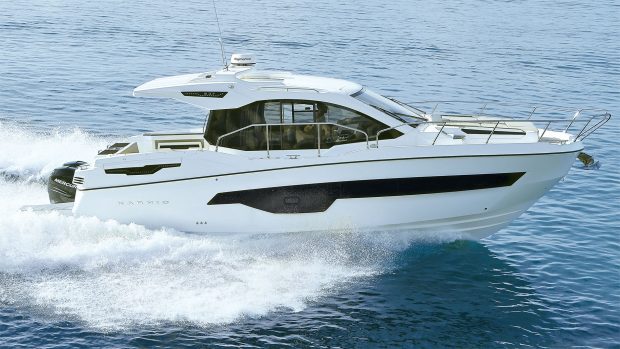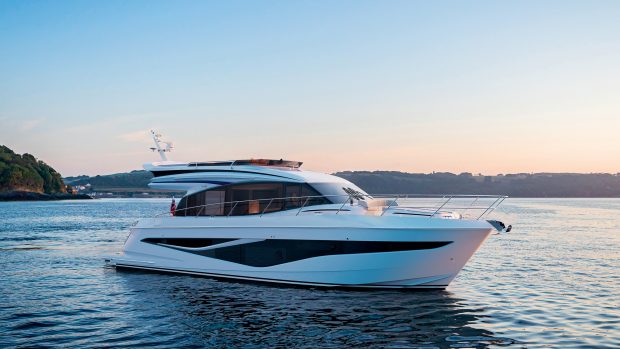With a little more thought and almost no extra cost we can do many things to lessen the impact cruising has on our natural habitats and wildlife
I’ve worked as an environmentalist for almost 20 years now. It is a tough game, wins are rarely significant and are often difficult to define, but being a “green” boater is a bit less hair shirt than you might think.
It doesn’t require massive changes or cost, nor does it need modifications to our boats, just to our behaviour.
For animal enthusiasts, try to plan your voyages to avoid sensitive areas such as mudflats or cliffs where seabirds may be nesting from March to July.
Avoid driving through birds rafting at sea, as this can make them regurgitate food meant for their young.
It’s tempting to try to get as close to wildlife as possible, but this can lead to collisions and even legal action should you be seen to be causing disturbance and acting recklessly.
Seals are particularly sensitive at pupping time (June/July for common seals and September/October for grey seals, in the UK), so minimise your wake, keep your distance and use a decent pair of marine binoculars for a better view.
Grey seals are very sensitive to disturbance at this time as they have a crucial bonding period with their pups and will abandon them if disturbed. Some haul-out sites are protected by law from all disturbance.
If dolphins come to bow ride, enjoy the experience but when they tire (indicated by moving away, changing direction or longer dive times), slow down and change direction slowly to avoid collisions or splitting the pod. Stay with them for short periods (15 minutes or less) and leave if another boat arrives.
Wildlife aside, use your fuel wisely and avoid fuel spills by using a drip-catching cuff. Tank gauges are notoriously badly calibrated, so when you next have the tank empty, take the opportunity to refill with known amounts and calibrate your gauge as you go. Using an in-line fuel whistle can also help.
Meanwhile, paying close attention to your boat’s optimum cruising speed can hugely affect your fuel consumption. Use the right revs for the sea conditions. More power does not always mean more speed and often the top 20% is wasted effort.
This applies to sailors, too, who spend a lot of their time motoring. We’re told to play the throttles in bumpy conditions, but bear in mind this can use more fuel than driving smoothly and not over-revving.
Going with the tide, reducing weight and shutting down auxiliary systems, such as air conditioning, will all save fuel.
The way you keep your boat clean can also help keep her green. There is no doubt she looks the better for a good scrub and the toilet smells sweeter too.
But modern cleaners are very powerful and can be harmful to varnish or GRP finishes. Flushed down the drain on the boat, they will continue their cleaning action on the gills of fish and other sea creatures, stripping their natural oils and potentially suffocating them, so always use low-phosphate eco cleaners. Good products will display symbols or logos such as the EU Eco Label (a sort of daisy with blue stars as petals).
A clean propeller and hull are good for more than just that extra knot – they reduce drag and can lower fuel consumption. A clean hull also has the bonus of reducing your likelihood of transporting non-native species if cruising outside British waters.
A handful of barnacles on your propeller can increase fuel consumption by 30-50%. Polish and clean the props as often as you can. My top tip is that udder cream, sold at most good farm suppliers, is a cheap alternative to some more expensive tailormade propeller treatments.
Oily bilges are pollution waiting to happen, but you can stop the problem at source. Most oil in the bilge comes from the engine, and an absorbent mat or sock will catch the drips.
When changing your oil filter, try using a cut-off two-litre drinks bottle, which fits almost perfectly over a standard CAV-type filter.
Invasive non-native species are a pest. Wireweed will jam your prop (the clue is in the name), while zebra mussel will clog intake pipes and seacocks without a backwards glance. Always wash down your anchor and dinghy before leaving an area to avoid spreading non-native species.
Finally, you should aim to run a zero-waste regime in the galley. This means leaving behind excess packaging, using reusable containers, cooking only what you need to eat and not dumping waste food overboard.
Another thing you can do, which I am a great believer in, is supporting the local economy by eating local produce when visiting a port.
These are but some steps to consider but there are plenty of green concessions we can make without ruining the fun of cruising, and surely that’s something that we can all get on board with.
About the author
Sarah Brown runs her own marine environmental consultancy, Cradle to Wave, and has been boating in Scotland for most of her life.










